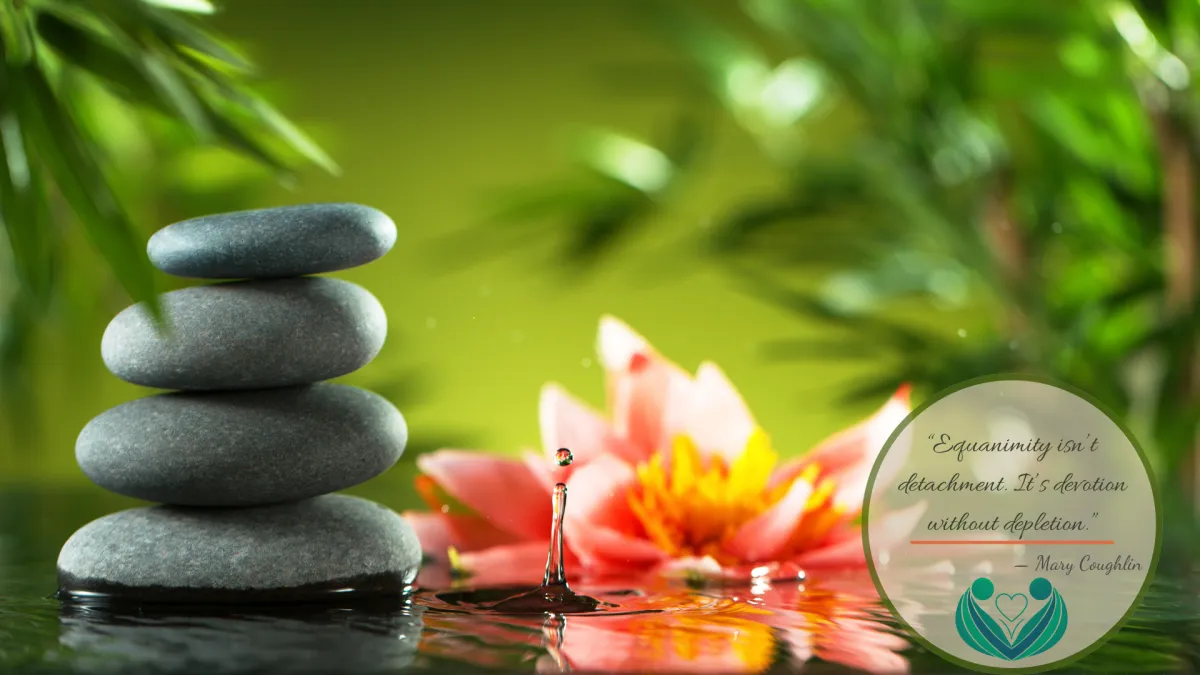
Equanimity is not Neutrality
“Equanimity isn’t detachment. It’s devotion without depletion.” - Mary Coughlin
When the world feels on fire—when babies are in distress, families are breaking down, clinicians are running on empty—there’s a word that often gets misunderstood in our trauma-informed spaces:
Equanimity.
It’s easy to confuse it with neutrality. Detachment. Or a serene kind of “stepping back.” But that’s not what equanimity asks of us. And it’s certainly not what trauma-informed presence looks like.
Equanimity isn’t about checking out—it’s about staying rooted.
It’s the steady breath when the alarms go off.
It’s the open heart when the policy changes feel inhumane.
It’s the calm voice that says, “This isn’t okay—and I’m not going to panic, I’m going to act with clarity.”
TIDC: Equanimity at the Bedside
In Trauma-Informed Developmental Care, equanimity is what allows us to stay responsive in the NICU without becoming reactive.
It’s what helps us read subtle cues from a baby, remain emotionally available to a distressed parent, and offer care with both precision and presence.
You can’t bring regulation to a dysregulated environment unless you’ve found a center of gravity within yourself.
That’s equanimity.
Not distance. Not denial.
But clarity in the chaos.
Caring Science: Holding Paradox with Grace
Jean Watson reminds us that caring involves holding paradox—the light and the dark, the fear and the love, the suffering and the hope.
Equanimity is the sacred posture that allows us to do that without collapsing.
It’s a kind of soul-stability.
A radical middle.
And it is cultivated, not inherited.
BUFFER: The E is for Equanimity
In the BUFFER framework, Equanimity is the deep breath that makes presence sustainable.
It’s the antidote to burnout and apathy.
Because when you’re constantly overwhelmed, you go numb. And when you’re constantly activated, you go reactive.
Equanimity is the middle way. The way of the wise, the wounded healer, the trauma-informed leader.
It says:
I see what’s wrong, and I will stay steady enough to meet it with love and strategy.
Equanimity in the Public Square
This isn’t just a NICU practice—it’s a civic one.
We don’t need more disengaged neutrality in our systems.
We need more engaged equanimity—the kind that resists injustice without replicating harm, that leads with vision instead of vengeance.
To be trauma-informed in a democracy means being grounded enough to stay in the work, even when it hurts.
Especially when it hurts.
A Reflection to Carry With You
This week, pause and ask:
💭 Where in your life do you confuse neutrality with equanimity?
💭 What would it look like to stay grounded and engaged?
Try putting one hand on your heart, one on your belly, and saying:
“I can stay rooted and still rise.”
An Invitation to Reclaim the Healing Moment
If this resonates, I’d love for you to join me on
🗓️ Friday, June 6th for The Presence: Reclaiming the Healing Moment in a Fractured World.
This 4-hour, CE-accredited virtual workshop is a space to explore the science, soul, and skill of presence—in caregiving, leadership, and beyond.
Together, we’ll explore how to access and sustain equanimity, even in systems that fray our nerves and fracture our attention.
🔗 Workshop Details + Registration Here
Keep tending the sacred,
Mary
